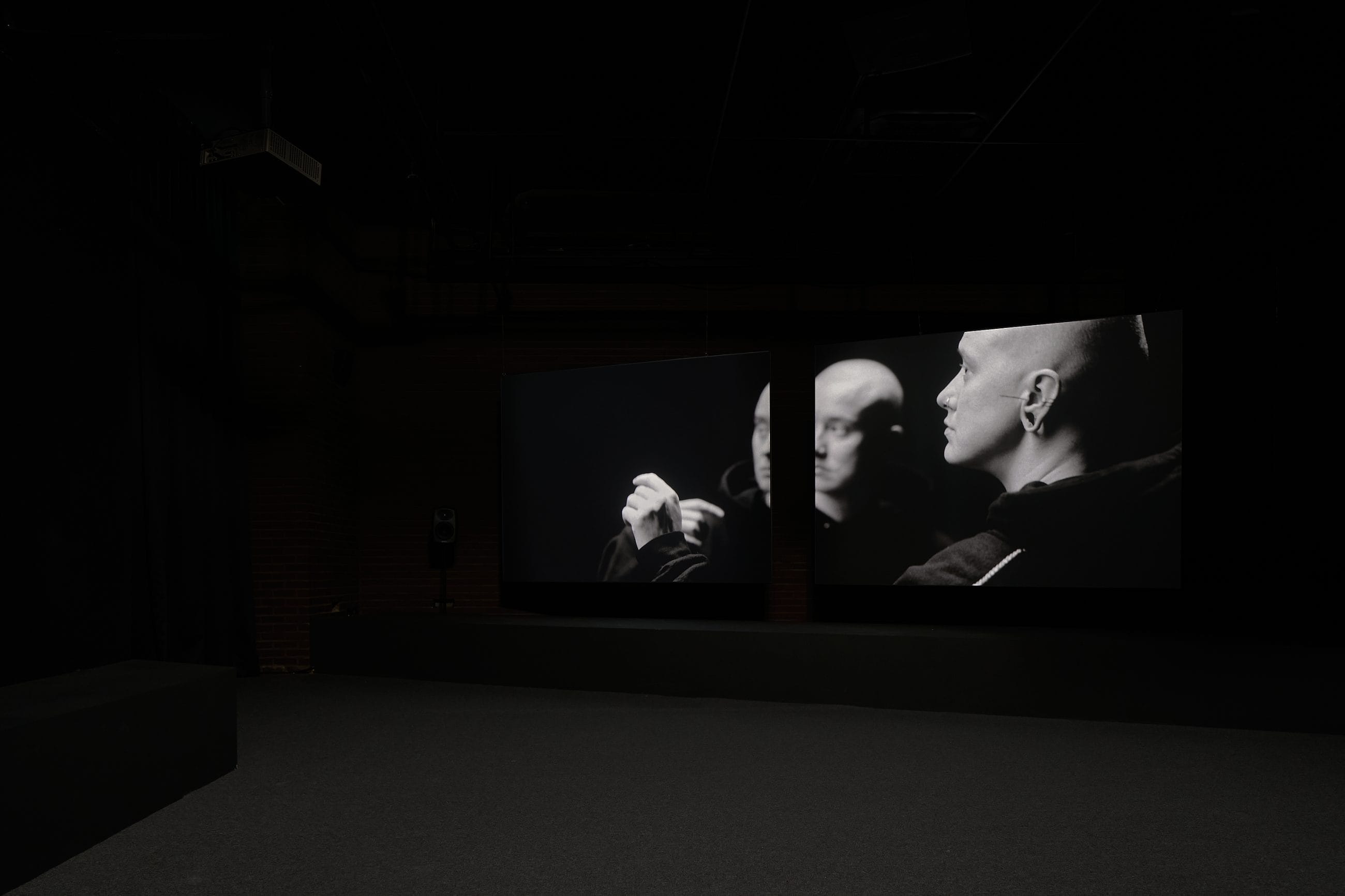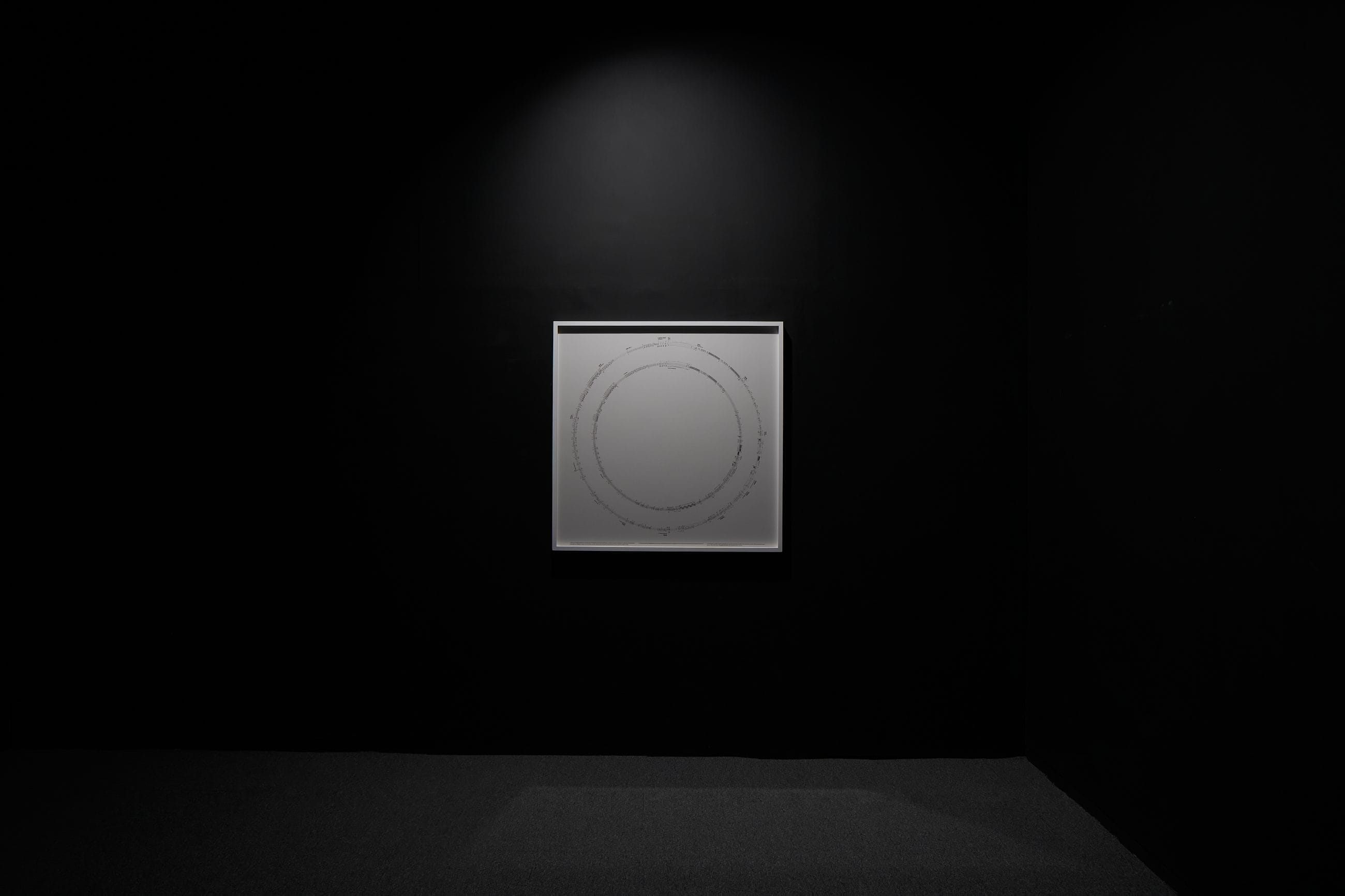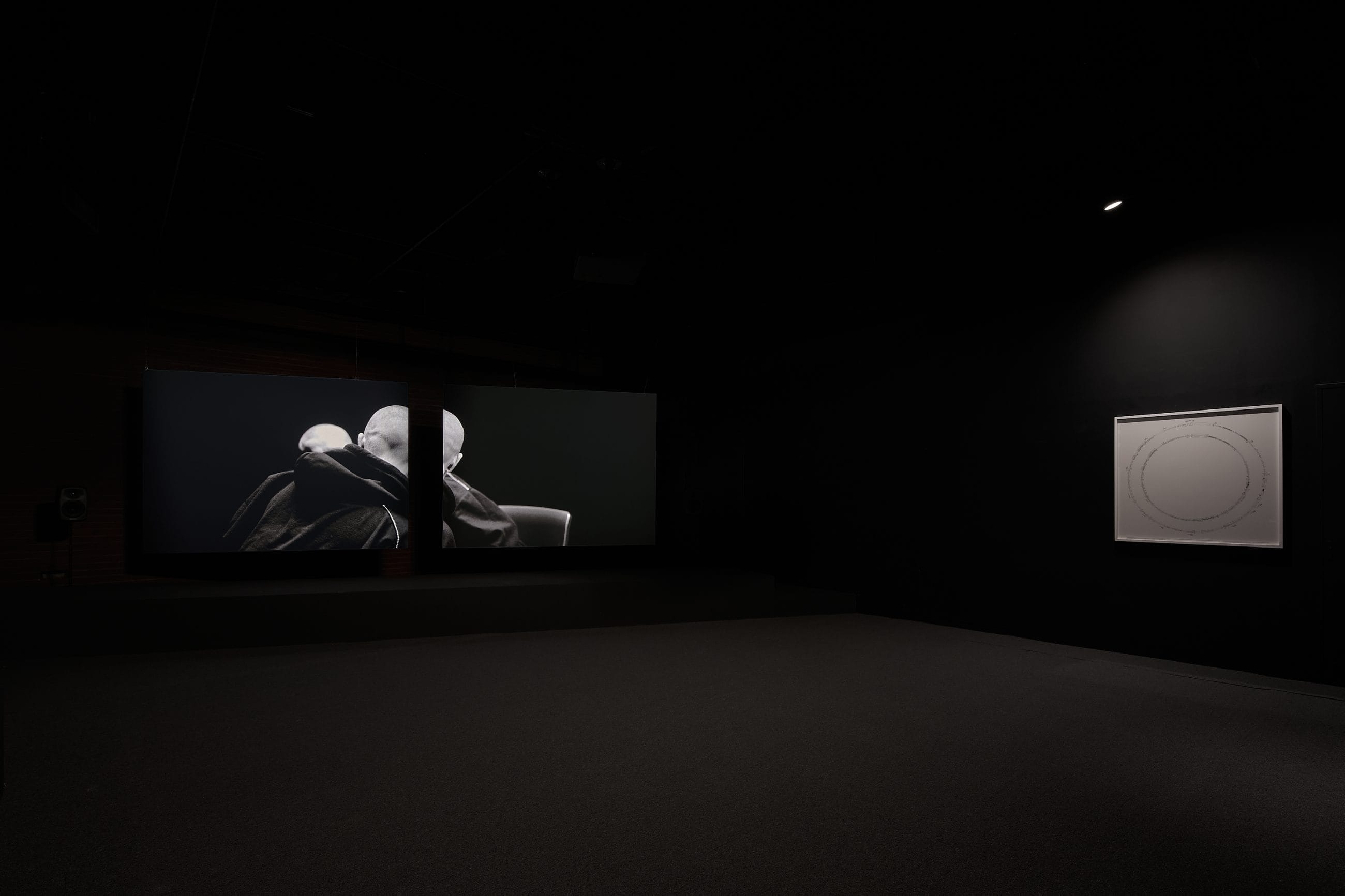
Donghoon Gang, attacca, at BOAN 1942, Seoul
“attacca” by Donghoon Gang, at BOAN 1942, Seoul, 26/07/2024 – 10/08/2024.
The Dyad: From Dot to Line
Stay in the middle, walk in this 미로(maze). One is whole, and through Two, reaches the completeness of Three. The two, which mediates and arbitrates between one and three, inherently signifies opposition and division. However, because they progress towards wholeness by opposition and the denial of phenomena, they ultimately denote creation. So long as the Other exists, we inevitably live through countless cycles of division and unity within relations.
In the 5th century BCE, Greek philosophers referred to the principle of Two or Otherness as the Dyad. They believed that the Two rebels against unity, diverging from the sacred Monad, as well as symbolizing an irreverent departure from the original unity and the primeval good. One can also note that the Indo-European root for ‘two’ implies a sense of “badness”. Both the Greek prefix dys- (as in dyspepsia) and Latin dis- (as in dishonorable) derive from ‘duo’. Furthermore, in words like ‘dubious’ and ‘doubt’, as in the German Zweifel, reveals a sense of existential denial or disbelief, as doubt can possibly signify a division of the mind.
The basic principle of the Dyad is polarity. The tension between two poles are manifested as oppositions, contrasts, and differences across all natural and human affairs. While the Dyad appears to contradict unity, the paradox lies in the fact that the opposing poles remember their origin, and together as one, pull each other back to the origin, eventually forming the basis of all creative processes. The ultimate integration of division and polarity takes a leap towards the Three, or returns to the One. Considering that the tension brings out a differentiation and development of history, the Two potentially implies hopefulness and creation.
Finally, the Dyad has a quality of ‘Boldness’. While we are relentlessly separated from the original wholeness, we gain agency and guidance in a state of turbulence. In such an experience of polarity and tension, we are forced to make creative choices at every moment, and this discomfort reveals to be a positive affirmation that we are on the right path. In other words, moving forward is a process of gaining agency and direction amidst all the instability.
I want a riddle, so say it ditto.
Donghoon Gang
Part of the lyrics to “Ditto” by NewJeans, released on December 19, 2022. In the original song, it starts with “I don’t want” and is used in the negative form, but for the purpose of this text, the part is quoted and changed to the positive form.
Aldous Huxley, The Perennial Philosophy, 1947, Chatto & Windus, p. 17.
Kim Kyoung-Jae, Numerology and its Symbolical Meaning for Spirituality, 2003, Theological Studies, 44, p.107-133.








fakewhale
Founded in 2021, Fakewhale advocates the digital art market's evolution. Viewing NFT technology as a container for art, and leveraging the expansive scope of digital culture, Fakewhale strives to shape a new ecosystem in which art and technology become the starting point, rather than the final destination.
You may also like
Jesper Just: Transcending Realities
Jesper Just, born in 1974 in Copenhagen, is a renowned figure in the realm of contemporary art, know
Ian Margo: d/wb project Abstraction, Mediation, and the Spiral of Technoculture
The next Solo Release curated by Fakewhale presents d/wb, a project by Ian Margo that unfolds as an
Zombie Curating in the Infrathin of the Now. Beyond the ‘Curatorial’
In my white-cube bedroom, I notice how cold and impersonal such a space can get. Books are few and f




